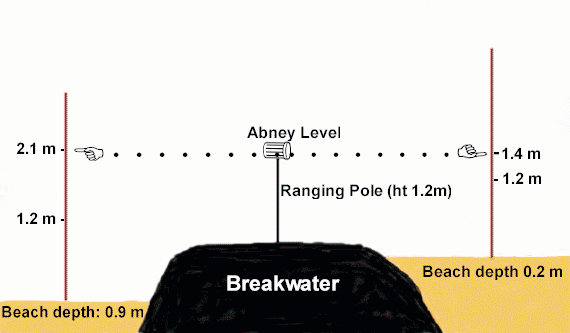|
Coastal Processes and Management Investigation: Sitges Background The beaches at the resort of Sitges are losing their sand. The construction of the Aiguadolē marina to the north-east of the town in the late1970s may be one factor in the interruption of the transfer of sediment to the south-west. Hard engineering schemes involving a number of breakwaters and eight rock islets have been constructed to help protect and build beaches between Punta de la Torreta and Punta de les Anquines. However, the loss of sand is continuing, with the recent total loss on some beaches in the Winter storms of 2001. Cliff erosion has undermined buildings and is threatening the main rail route to the south of Spain. There is an urgent need to reconsider the effectiveness of the existing defences and to develop a sustainable coastal management scheme to protect the shoreline and help build and maintain the beaches. Key Questions 1. Why should the coastline at Sitges be managed? 2. How could the coastline at Sitges be managed? 3. How do coastal processes affect the Sitges beaches? 4. How and why do beach characteristics vary along the Sitges coastline? 5. Why are some Sitges beaches more affected by erosion than others? 6. Are the Sitges beaches unsustainable? 7. Are the Sitges beaches sustainable? 8. How effective are the coastal management schemes at Sitges? 9. What are the conflicts involved in the management of the Sitges coastline? 10. To what extent are beach profiles influenced by the building of hard engineering structures along the Sitges coast? 11. To what extent is beach width influenced by the building of hard engineering structures along the Sitges coast? 12. To what extent have the Sitges beach recovered after the November 2001 and May 2002 storms? 13. "The closer together the groynes on Sitges beach the more effective they are in maintaining beach width and therefore protection". To what extent is this true? 14. To what extent is beach height influenced by the building of hard engineering structures along the Sitges coast? 15. "The best form of management along the Sitges coast would be to allow natural processes to act unhindered". To what extent is this true? 16. "Longshore drift has a greater influence on sediment budget than movement up and down the beach". To what extent is this true? 17. To what extent have winter storms had an impact on beach width and height along the Sitges coast? 18. What is the most effective combination of hard engineering techniques in maintaining beach width in the Sitges coastal area? 19. How do human and physical processes effect the Atlantida beach at west Sitges? Methodology BEACH 18 1. Measure the long axes and long-axes alignments of 50 pebbles in the swash zone at 12 locations spread evenly along the beach between the discotheque and river delta. Mark the locations on a map. 2. Annotate the map with evidence of:
SAFETY AT BEACH 18
BEACHES 4 - 17 For each beach: (a) collect data for 3 beach profiles as shown in the example below:
The width of the beach should be recorded along with changes in slope and beach sediment material. (b) Record the approximate wave height and direction. (c) Annotate a map with evidence of:
(d) Measure the differences in beach height either side of the breakwater. The method is shown below:
|

